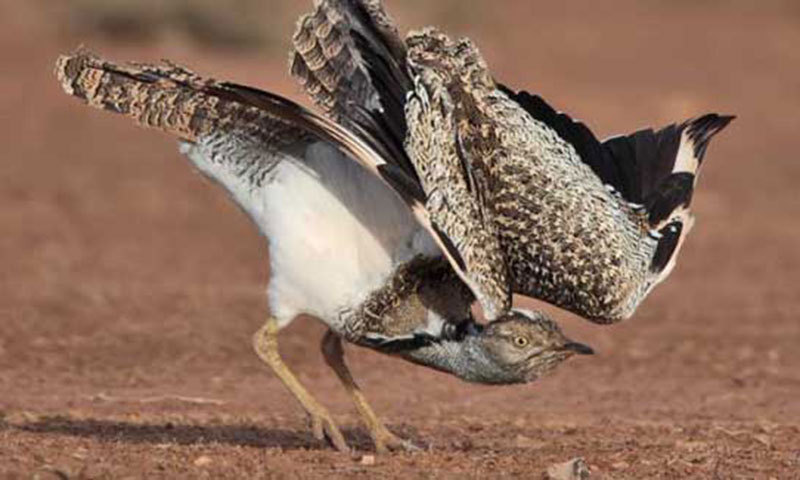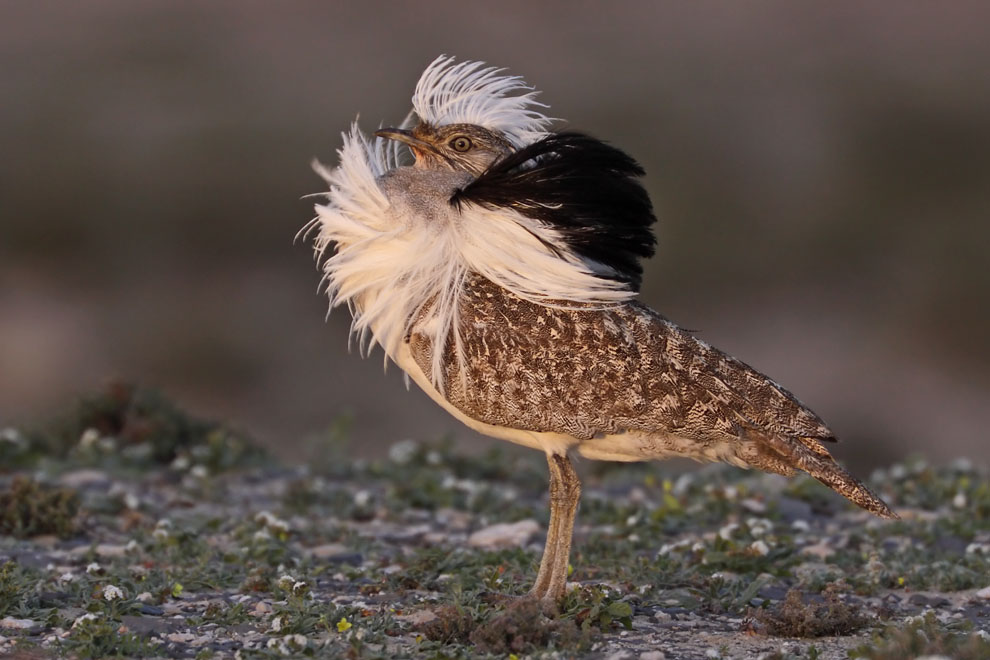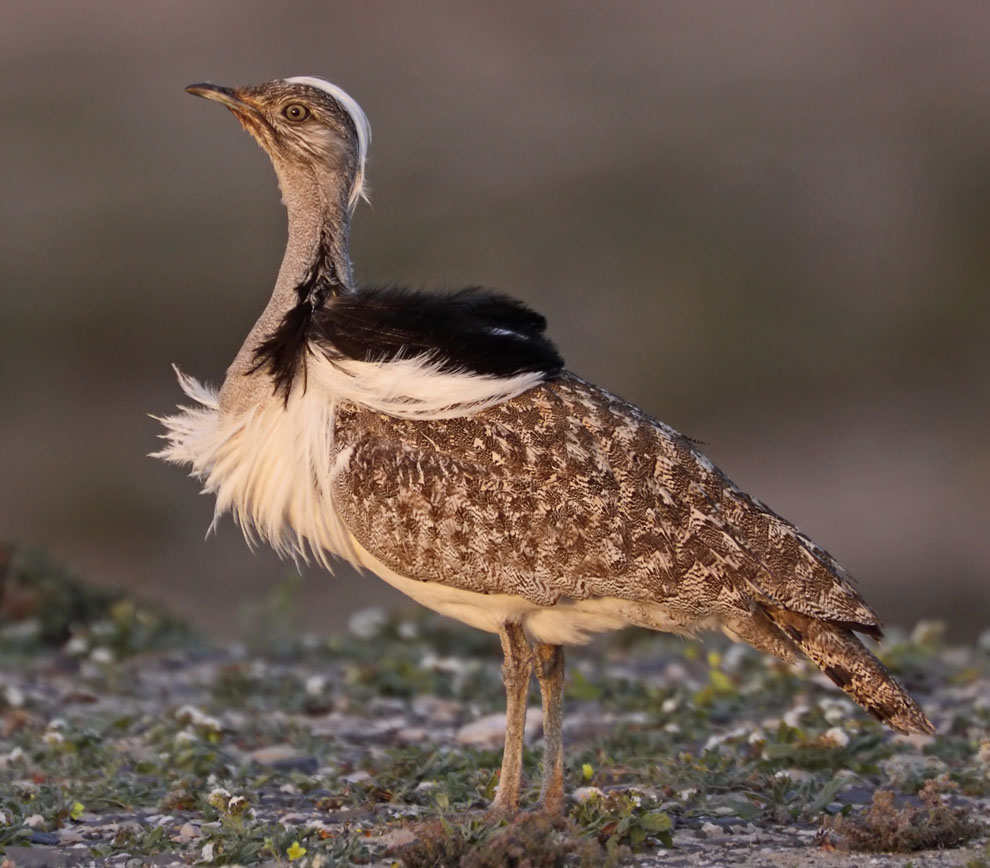
Chlamydotis undulata
TAXONOMY
Psophia undulata Jacquin, 1784. Three subspecies.
OTHER COMMON NAMES
English: Ruffed bustard; French: Outarde houbara; German:
Kragentrappe; Spanish: Avutarda Hubara.
PHYSICAL CHARACTERISTICS
Male: 25.5–29.5 in (65–75 cm), 4–7 lb (1.8–3.2 kg); female:
21.5–25.5 in (55–65 cm), 2.7–3.8 lb (1.2–1.7 kg). Buff crown
with white erectile feathers along center. Pale grayish buff
head and neck with black erectile plumes down side of neck to
breast. Back pale sandy buff, mottled and lined with darker
brown. Female has reduced neck plumes, otherwise similar.
DISTRIBUTION
C. u. fuertaventurae: eastern Canary islands; C. u. undulata: Morocco
to north central Egypt (not eastern Nile Valley or Sinai).
HABITAT
Arid semidesert with tussock grass, sandy grassland, and stony
plains with scattered low shrubs; regularly on cultivation in
nonbreeding season.
BEHAVIOR
Essentially solitary and nonmigratory (but locally nomadic).
Males display in breeding season; no pair bonds.
FEEDING ECOLOGY AND DIET
Vegetable matter, insects, and small reptiles.
REPRODUCTIVE BIOLOGY
Main breeding season March and April. Clutch usually 2–3
eggs, laid in bare scrape and incubated for 24–28 days by female;
fledging period about 35 days.
CONSERVATION STATUS
Expanded species (including macqueenii) considered Near
Threatened. Although undulata is less severely hunted than its
Asiatic cousin, numbers are probably much lower overall, and
hunting pressure increasing. Population of race fuertaventurae:
about 700 individuals.
SIGNIFICANCE TO HUMANS
Favored quarry of Arab dignitaries who hunt with falcons and
guns.
Other popular Animals
Photo Gallery of - Houbara bustard




 Animalia Life
Animalia Life